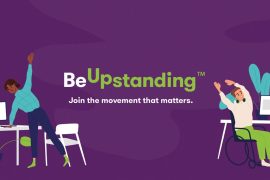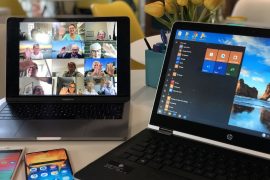During the recent COVID-19 outbreak, the Australian government had implemented social isolation in an effort to flatten the curve. Many office-based employees were encouraged to work from home in order to minimize the risk of individual’s exposure to COVID-19 through face to face contact. While working from home is reasonably practicable with the current available technology, this is often associated with a shift in workplace culture. Critical to maintaining a successful workplace culture is ensuring that there is knowledge sharing among employees.
What is a knowledge-sharing culture?
A knowledge-sharing culture is a set of understandings that focus on disseminating existing knowledge among team members and bringing new knowledge from the external environment. It is a set of unwritten guidelines that promotes sharing knowledge, experiences, and insights that are critical for accomplishing team missions. The key elements in knowledge sharing are not only the hardware and software, but also the ability and willingness of team members to actively participate in the knowledge sharing process.
Why it is important: Shared understanding is a collective way of ensuring organisation relevant knowledge, and can influence the ability of teams to cooperate and perform well. The internet enables knowledge exchange in ways such as online group meetings that were not possible before, including the ability for team members that are not co-located to communicate in real-time. Knowledge-sharing contributes to virtual team effectiveness by promoting more efficient use of team resources while reducing implementation errors, thus increasing cohesion, satisfaction, and motivation among team members.
What is required? Creating a knowledge-based environment and culture requires more than just information and communication technology. It requires other crucial elements such as group trust and relational bonds, leadership, intercultural communication competence, and cross-cultural training. Such elements can foster a collaborative interactive permissive space where virtual team members are actively encouraged to engage in regular and frequent reciprocal exchange of ideas and in the creation of new ideas. The three key elements identified are trust, communication and technology.

Trust: How can I trust my team members to do their share of work?
The quantity and quality of knowledge sharing is influenced by the levels of trust among team members. Virtual working environments can exasperate some of the barriers to generating this trust. Specifically, the reduction or lack of verbal and social cues due to remote working can make it difficult to build rapport across team members.
Common Barriers
- How do I trust my team members confidently without being able to see or talk to them in person? Verbal and non-verbal communications play important roles in face-to-face interactions. Language, face expression and gestures are the way in which members build trust. Confident verbal communication helps to build personal trust.
- What if I embarrass myself in front of others when sharing ideas? Potential embarrassments can deter team members from sharing their ideas or suggestions. It is important to build a psychological safe virtual working environment because people need to feel comfortable and trust that they won’t be punished to take risks and voice their opinions. This is key to fostering innovation in the workplace.
- Kick off with a face-to-face meeting if possible or videoconferencing if not possible. This can help develop rapport as staff can better see your non-verbal cues. Schedule face-to-face or videoconferencing at least once a month to foster and maintain trust in relationships.
- The team leader can establish “trust bank accounts” to remind teammates’ of their contributions
- As a team member, interact with a proactive, enthusiastic, generative style of action. Research has shown that such actions strengthen the trust in others to manage the uncertainty, risk, and challenges. Routinely ask for feedback and check in with how confidently staff feel about making a mistake. Always approach everyone’s opinions with respect and appreciation. This can help create a psychological safe team culture.

Communication: How do I communicate effectively with my team?
Communicating effectively is important for establishing clear objectives for the team. Knowledge-sharing can only be achieved when members feel confident that all team members are on the same page. Research has shown that openness to communication between members positively affect knowledge sharing in order to accomplish the team’s common goals.
- Is this what they mean? Barriers to achieving effective communication include a lack of clarity of objectives, providing incorrect or misleading information, or when not everyone is on the same page.
- Who knows what? For a team that has not worked together before, having very little knowledge of each other’s strengths or expertise can be a barrier to a team’s transactive memory. Transactive memory is an important function of information sharing. It refers to the development of specialisation such that it reduces the memory load for each individual while allowing access to a large pool of information collectively. A lack of open communication is another barrier as it results in uneven distribution of information and consequently, staff are not on the same page.
Solutions
- Create a portal where all members can post and access information
- Set clear objectives with documented due dates on which everyone agrees on – considering developing SMART goals
- Establish task objectives, priorities, deadlines and goals that everyone can agree on. Interviews of employees in a virtual based company expressed that when objectives, priorities, deadlines and goals were unclear, it was detrimental to successful collaboration.
- Team leaders should ensure that information is shared in a timely manner and conversation is encouraged. Team leaders have an important role in role-modelling and facilitating a knowledge-sharing culture.
- Schedule routine conference calls and email catch-ups to ensure that staff share information on a regular basis. Follow-up teleconferences with a written summary and action plan will help counteract any cultural and language problems. This also helps to keep those who were absent from meetings up-to-date.

Technology: How do I access the information needed?
Appropriate use of technology allows for archiving of documents and making information easily accessible. However, this requires that all members feel competent about utilising the technology. Team members also need to be committed to breaking old communication habits and putting the new technology to use.
- Why should I learn how to use this new technology? While outmoded technology hinders knowledge sharing, having the most advanced technology will not solve the problem if members lack the commitment to break old habits and fail to put the new technology to use.
- Is my information getting across? Besides individual differences in the ability to use technology, inappropriate mediums for the type of information and a lack of accessibility can also hinder sharing valuable information.
- Provide training on new technologies to ensure team members are comfortable with the technology and motivated to use it when needed
- Monitor usage to ensure that richer and more sophisticated technologies are used for complex issues – for example, avoid sending long emails with attachments, instead have a centralized file storage that is accessible to all
- Create chat rooms for issues that need 1. open discussion and, 2. immediate clarification, as email communication may result in unnecessary waiting time. Moreover, videoconferences are not always effective because staff may feel reluctant to interrupt the speaker, potentially resulting in the loss of good ideas.
How does BeUpstanding help contribute to a knowledge sharing culture?
The BeUpstanding program supports work teams to create and cultivate a culture where sitting less and moving more is the norm. Key components of the program are the provision of evidence-based resources to increase knowledge and awareness of the benefits of sitting less and moving more, and a participatory approach, where all team members are encourage to input on how to achieve the culture change. The technology that underpins the program is designed to be user-friendly and accessible. If you have not yet signed up to BeUpstanding, or want to find out more about the program, click here or contact us at [email protected].
This article was written by Catherine Hsieh as part of her 4th year psychology placement for The University of Queensland.










Comments are closed.